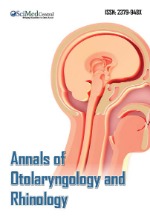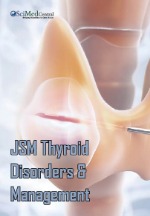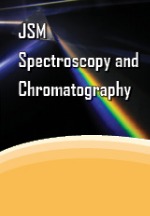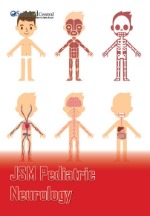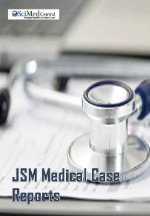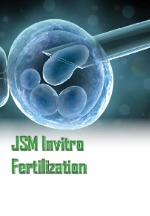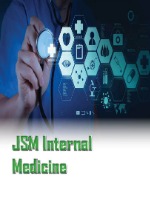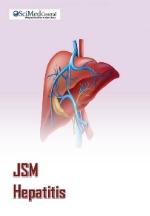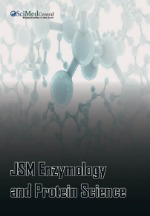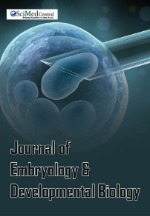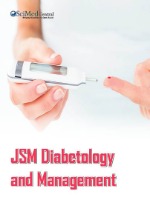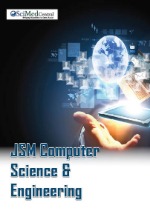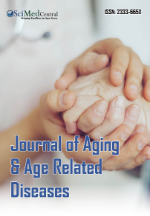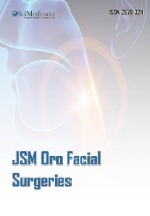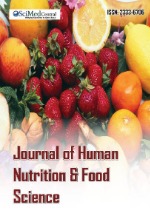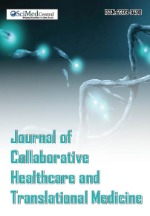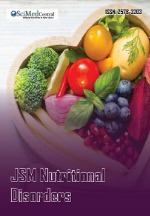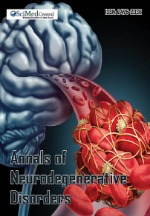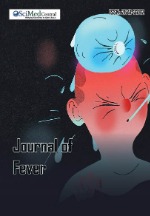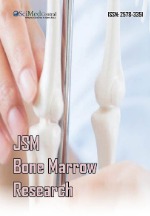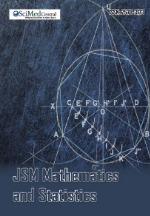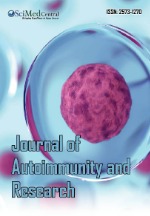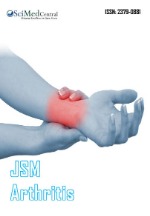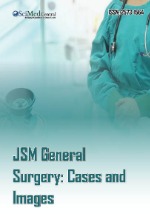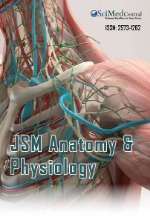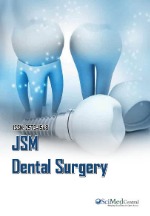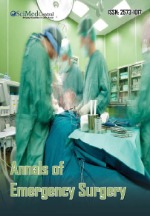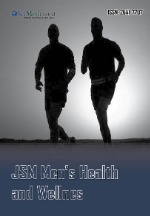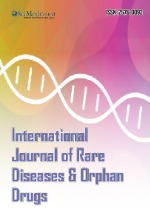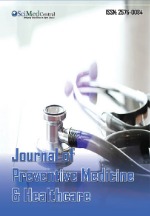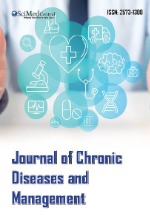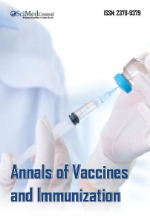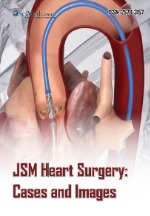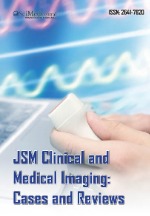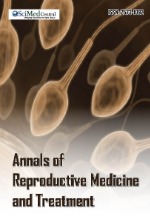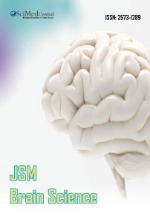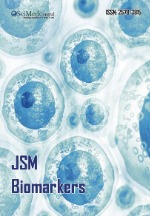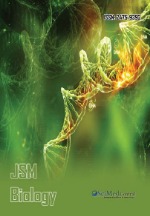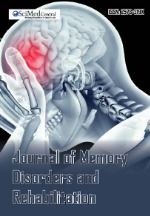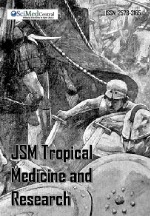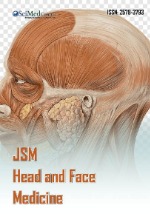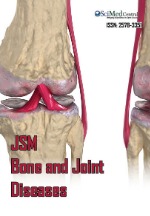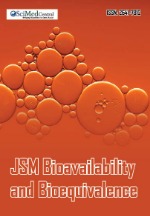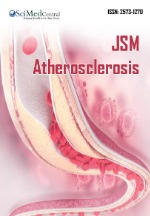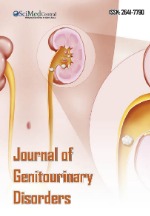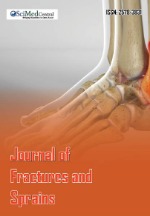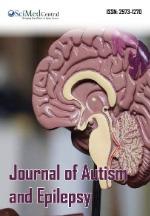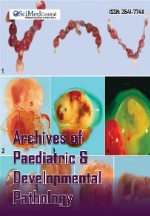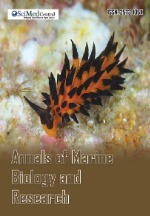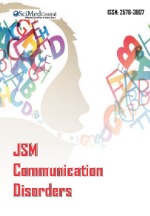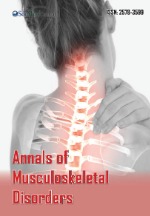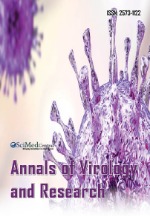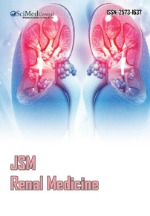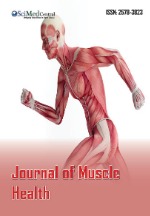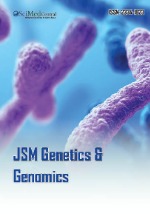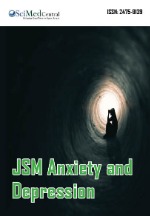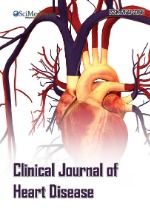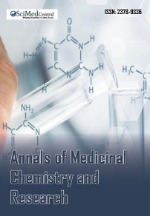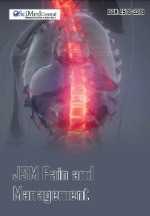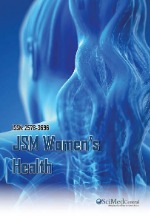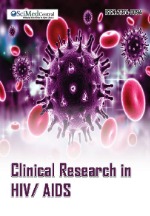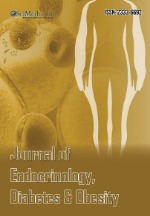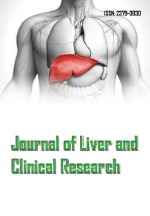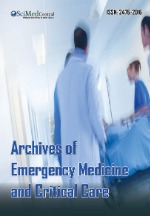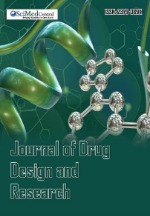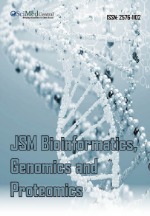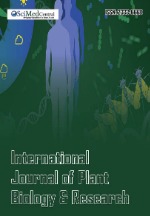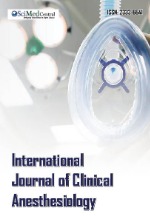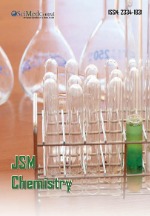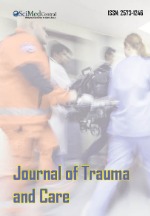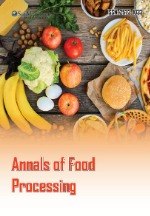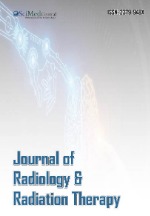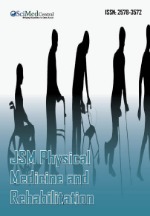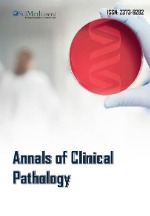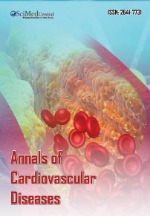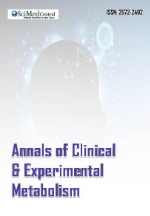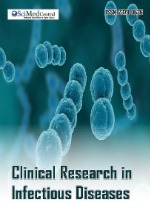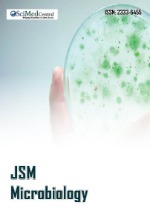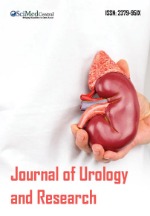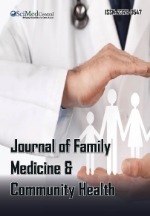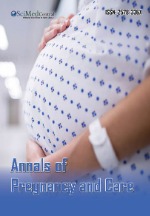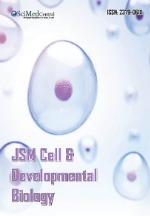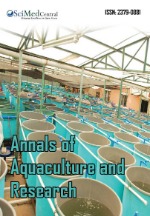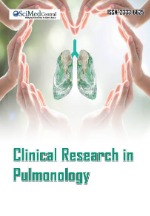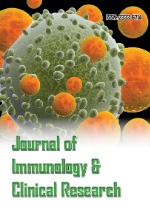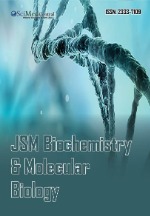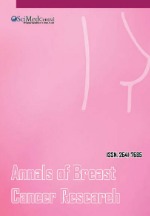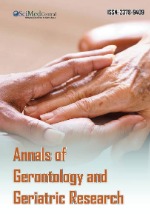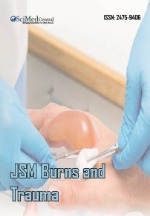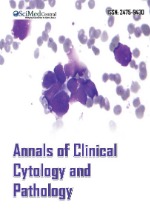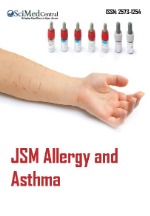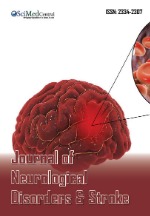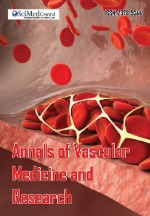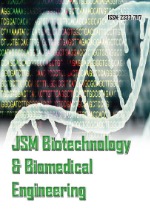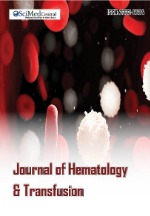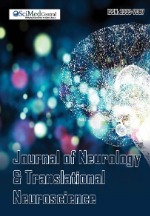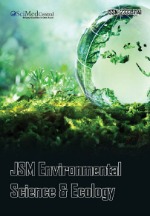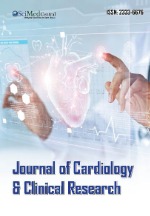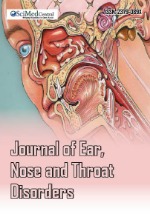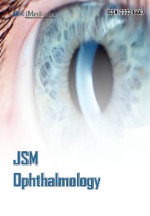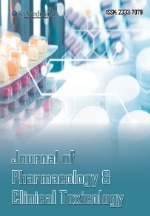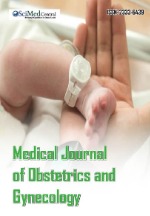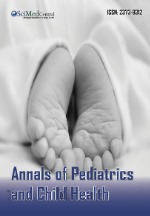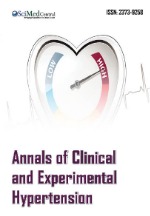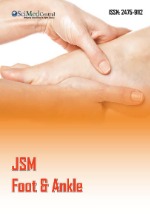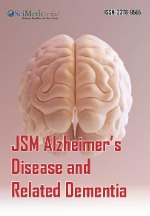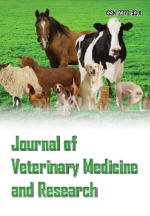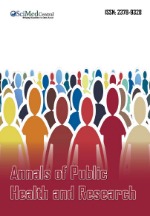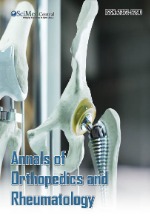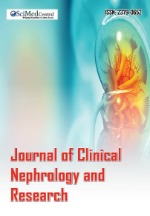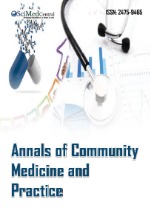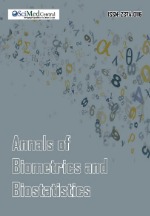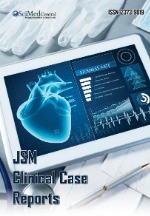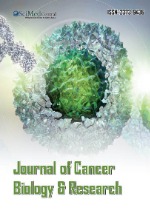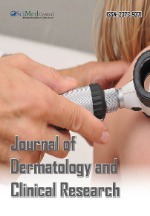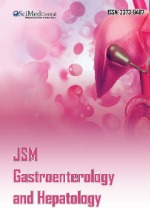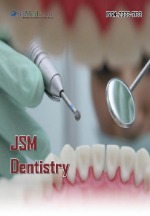Beyond Age: Investigating the Unique Risk Factors and Outcomes of Early-Onset Gastric Cance
- 1-5. Department of Medicine, Division of Internal Medicine, Baylor Scott & White Medical Center, USA
- 6. Department of Medicine Division of Hematology Oncology, Baylor Scott & White Medical Center, USA
- 7. Division of Internal Medicine, Department of Medicine, Baylor College of Medicine, Temple, Texas 76508
Abstract
Early-onset gastric cancer (EOGC) defined as gastric cancer diagnosed in individuals aged ≤49 years, represents a distinct and increasingly recognized clinical entity with an aggressive phenotype and poor prognosis. Unlike late-onset gastric cancer, EOGC is often diagnosed at advanced stages and is associated with distinct histopathological and molecular features. This study aims to characterize the demographic, clinical, and molecular characteristics of EOGC in a diverse cohort to elucidate potential risk factors and disease behavior. A retrospective cohort study was conducted on 32 EOGC cases identified from over 400 screened gastric carcinoma patients at Baylor Scott & White Healthcare (2002–2022). Demographic, clinical, and molecular data, including Helicobacter pylori infection, lifestyle factors, histopathology, and biomarkers (HER2, MSI), were analyzed. Among 32 patients diagnosed with EOGC, the median age was 45 years (±7.2), with a slight female predominance (53.1%). Hispanic ethnicity accounted for 41% of cases. The most common risk factors were H. pylori infection (84.6%), elevated BMI (78.1%), and smoking (51.7%). Most tumors were poorly differentiated (87.5%), with signet ring cell carcinoma (SRCC) comprising 43.7% of cases. Advanced-stage disease (III/IV) was present in 59.4% of patients at diagnosis. Tumors were predominantly located in the gastric body (46.9%) and antrum (34.4%). HER2 positivity was observed in 4.2% of cases, while MSI was present in 8.3%. The overall 5-year survival rate was 22.6%, significantly lower in advanced-stage disease (5.9% for stage III/IV vs. 63.6% for stage I/II, p = 0.028). Gender comparisons revealed higher rates of alcohol use and antral tumors in males, while females exhibited more poorly differentiated tumors and gastric body involvement. This study underscores the aggressive nature of EOGC, highlighting advanced-stage presentation, poor survival, and distinct molecular pathways. The high prevalence of H. pylori, obesity, and smoking reinforces the need for targeted prevention. Given its rising incidence and late-stage diagnosis, risk-based screening, optimized treatments, and novel therapeutic strategies are crucial to improving patient outcomes.
KEYWORDS
- Early-onset gastric cancer; Signet ring cell carcinoma; Helicobacter pylori; HER2; Microsatellite instability; Advanced-stage gastric cancer
CITATION
Stryelkina M, Nguyen M, Reddy P, Doan A, Min M, et al. (2025) Beyond Age: Investigating the Unique Risk Factors and Outcomes of Early- Onset Gastric Cance. JSM Clin Oncol Res 13(1): 1075.
INTRODUCTION
Gastric cancer (GC) is the fifth-most common malignancy and the third leading cause of cancer-related deaths globally, responsible for approximately 1 million new cases and 700,000 deaths each year [1]. The incidence of GC varies significantly across regions, with the highest age-standardized incidence rates in Asia and the lowest in North America. In the United States, there were approximately 320,000 cases of gastric cancer diagnosed between 2001 and 2015 [2]. Several factors contribute to GC occurrence, including non-modifiable factors such as age, sex, race/ethnicity, and genetics, as well as modifiable factors like Helicobacter pylori infection, gastroesophageal reflux disease (GERD), obesity, tobacco and alcohol consumptions. Despite a steady decline in overall GC incidence and mortality rates over the past few decades, there has been a notable increase in the proportion of GC cases among patients under the age of 50. In the United States, the proportion of GC in patients under 50 years old rose from 1.75% in 1973 to 3.5% in 2015 [2].
EOGC is defined as gastric cancer diagnosed in individuals aged 49 years or younger, in contrast to late- onset gastric cancer, which occurs in patients older than 49 years. EOGC is often associated with advanced disease at the time of diagnosis, high-grade histological features, and poorer clinical outcomes compared to late-onset gastric cancer. While the exact causes of EOGC remain unclear, genetic factors are thought to play a significant role, as younger patients have had less time for exposure to environmental carcinogens and other risk factors.
Studies have shown that a family history of gastric cancer increases the likelihood of developing this cancer by threefold [3]. Furthermore, research indicates that the clinicopathological features of gastric cancer differ between younger and older patients. In younger patients, characteristics such as female predominance, poorly differentiated tumors, a higher occurrence of diffuse-type histology, and advanced-stage disease are more commonly observed [4]. Symptoms of EOGC, including abdominal pain, hematemesis, fatigue, anorexia, dyspepsia, weight loss, and gastrointestinal bleeding, are often vague and overlap with benign conditions, leading to delays in diagnosis [5]. The prognosis for EOGC is generally poor, with lower survival rates and higher mortality compared to late-onset gastric cancer. This is largely due to its aggressive progression and frequent diagnosis at advanced stage, which significantly impacts outcomes. For instance, a study by Rona et al. reported 3-year survival rates of 87.1%, 32.2%, and 6.9% for stage I/II, III, and IV disease, respectively. Key factors associated with survival in patients with resectable tumors include larger tumor size (>4 cm), lymphovascular invasion, and elevated CEA levels [6]. This study aims to explore the demographic, clinical, and molecular characteristics of EOGC, with particular emphasis on its risk factors, histological subtypes, and genetic profiles across a diverse patient population.
METHODS
Study population
A retrospective cohort study was conducted on patients under 50 years of age diagnosed with gastric adenocarcinoma at Baylor Scott & White Healthcare, Temple, Texas, between 2002 and 2022. Demographic characteristics, including age, race, ethnicity, and familial history of cancer, were collected from electronic medical records (EMR). Modifiable risk factors, such as body mass index (BMI), tobacco use, alcohol consumption, Helicobacter pylori infection status, and a history of GERD, were also evaluated. Socioeconomic variables, including insurance status, were analyzed to provide a comprehensive assessment of patient risk profiles and their potential associations with disease presentation.
Tumor Characteristics and Molecular Profiling
Tumor characteristics were assessed through histopathological and clinical reports. Key features analyzed included tumor location, TNM staging at diagnosis, histological subtype (intestinal, diffuse, or mixed), and the grade of differentiation (well, moderately, or poorly differentiated). Mismatch repair (MMR) deficiency and microsatellite instability (MSI) were evaluated using immunohistochemical staining for MLH1, MSH2, MSH6, and PMS2 protein expression. HER2 status was determined by immunohistochemistry and confirmed by fluorescence in situ hybridization (FISH) when results were equivocal. Additionally, molecular profiling was conducted to identify genetic alterations in tumor samples, including HER2 overexpression, MSI, and PIK3CA mutations. Genetic analyses were performed using commercial multigene panels (e.g., TruSight Oncology 500, Illumina Inc., San Diego, CA, USA) on genomic DNA extracted from formalin- fixed, paraffin-embedded (FFPE) tissue when available.
Statistical Analysis
Baseline characteristics were summarized as percentages for categorical variables and medians with interquartile ranges (IQR) for continuous variables. Univariate analyses were performed to identify variables associated with advanced-stage presentation and histological subtypes using chi-squared or Fisher’s exact tests, as appropriate. Multivariate logistic regression models included candidate variables with p-values ≤0.05 in univariate analysis. Results were presented as odds ratios (ORs) with 95% confidence intervals (CIs). Statistical significance was defined as p 0.05.
RESULTS
Demographic Characteristics
A total of over 400 patients with gastric carcinoma were screened, and 32 were identified as having early- onset gastric cancer (EOGC) between 2002 and 2022. The median age of the cohort was 45 years (±7.2). There was a slight predominance of female patients, with 53.1% of the cohort being female and 46.8% male. Regarding racial distribution, 17 patients (53.1%) identified as White, 11 (34.3%) as African American, 1 (3.1%) as Hawaiian, and 3 (9.4%) as Other. Ethnicity data showed that 8 patients (25%) were White, non-Hispanic; 13 (41%) were Hispanic;10 (31.2%) were African American, non-Hispanic; and 1 (3.1%) identified as Other. A familial history of cancer was documented in 17 patients. Of these, 3 (17.6%) reported a history of ovarian and/or breast cancer, 1 (5.8%) had a history of gastric cancer, 1 (5.8%) reported pancreatic cancer, and 2 (11.7%) reported other cancer types. Detailed demographic characteristics are provided in Table 1.
Table 1: Demographic and Clinical Characteristics of patients with EOGC
|
Characteristic |
EOGC (n=32) |
% |
|
Age at Diagnosis (years, median ± SD) |
45 ± 7.2 |
|
|
Sex |
|
|
|
Female |
17 |
53.1 |
|
Male |
15 |
46.9 |
|
Race |
|
|
|
White |
17 |
53.1 |
|
African American |
11 |
34.3 |
|
Hawaiian |
1 |
3.1 |
|
Other |
3 |
9.4 |
|
Ethnicity |
|
|
|
White, non-Hispanic |
8 |
25 |
|
Hispanic |
13 |
41 |
|
African American, non-Hispanic |
10 |
31.2 |
|
Other |
1 |
3.1 |
|
Familial History of Cancer |
17 |
53.1 |
|
Modifiable Risk Factors |
|
|
|
H. pylori Infection |
22/26 |
84.6 |
|
Obesity (BMI ≥ 24.0 kg/m²) |
25/32 |
78.1 |
|
Smoking History |
15/29 |
51.7 |
|
Alcohol Use |
8/29 |
27.6 |
|
GERD History |
14/27 |
51.8 |
Modifiable Risk Factors
The analysis of modifiable risk factors revealed that, among patients with early-onset gastric cancer (EOGC), elevated BMI (≥24.0 kg/m²) was identified in 78.1% (25/32) of individuals. Helicobacter pylori infection was documented in 84.6% (22/26) of patients, with gastric biopsy serving as the primary diagnostic method in the majority of cases. Cigarette smoking was reported by 51.7% (15/29) of patients, while 51.8% (14/27) had a history of GERD. In contrast, alcohol consumption was less frequently reported, with only 27.6% (8/29) of patients indicating use. Regarding socioeconomic factors, 76.9% (20/26) of patients had insurance at the time of diagnosis. Detailed characteristics of modifiable risk factors are provided in Table 2.
Table 2: Characteristics of modifiable risk factors.
|
Characteristic |
EOGC; number (%) |
|
BMI (kg/m²) (n=32) |
|
|
< 24.0 |
7 (21.9) |
|
≥ 24.0 |
25 (78.1) |
|
History of Cigarette Smoking (n=29) |
|
|
Yes |
15 (51.7) |
|
No |
14 (48.3) |
|
Alcohol Consumption (n=29) |
|
|
Yes |
8 (27.6) |
|
No |
21 (72.4) |
|
History of GERD (n=27) |
|
|
Yes |
14 (51.8) |
|
No |
13 (48.1) |
|
History of H. pylori Infection (n=26) |
|
|
Gastric biopsy proven H. pylori |
22 (84.6) |
|
Stool antigen test proven H. pylori |
2 (7.7) |
|
H. pylori IgG ELISA* |
2 (7.7) |
|
Insurance at Time of Diagnosis (n=26) |
|
|
Yes |
20 (76.9) |
|
No |
6 (23.1) |
Clinical Presentation and Tumor Features
Among patients with early-onset gastric cancer (EOGC), the most common presenting symptoms were abdominal pain and weight loss, reported in 65.6% (21/32) of cases, followed by isolated symptomatic anemia (12.5%), isolated early satiety (9.4%), gastric outlet obstruction (6.25%), and hematemesis (6.25%). Tumors were most frequently located in the gastric body (46.9%), followed by the antrum (34.4%) and cardia (18.7%). At diagnosis, 59.4% (19/32) of patients presented with advanced-stage disease (Stage III/IV), while 40.6% (13/32) were diagnosed at an earlier stage (Stage I/II). Among the 32 patients, adenocarcinoma was the most common histological subtype (53.1%), followed by signet ring cell carcinoma (SRCC) in 43.7%. In terms of tumor differentiation, the majority were high-grade (poorly differentiated), accounting for 87.5% (28/32) of cases. Comprehensive details of clinical presentation and tumor features are provided in Table 3.
Table 3: Clinical Presentation and Tumor Features
|
Characteristic |
EOGC; number (%) |
|
Presentation at Diagnosis (n=32) |
|
|
Abdominal pain and weight loss |
21 (65.6) |
|
Isolated early satiety |
3 (9.4) |
|
Isolated symptomatic anemia |
4 (12.5) |
|
Gastric outlet obstruction |
2 (6.25) |
|
Hematemesis |
2 (6.25) |
|
Gastric Location of Biopsy (n=32) |
|
|
Gastric Antrum |
11 (34.4) |
|
Cardia |
6 (18.7) |
|
Body |
15 (46.9) |
|
Stage at Presentation (n=32) |
|
|
I/II |
13 (40.6) |
|
III/IV |
19 (59.4) |
|
Histological Type (n=32) |
|
|
Signet ring cell carcinoma |
14 (43.7) |
|
Adenocarcinoma |
17 (53.1) |
|
Mucinous adenocarcinoma |
1 (3.12) |
|
Tumor Differentiation Grade (n=32) |
|
|
High grade (poorly differentiated) |
28 (87.5) |
|
Low-grade (well/moderately differentiated) |
4 (12.5) |
Comparison of clinicopathologic characteristics between the male EOGC group and the female EOGC group
To explore whether the observed differences in clinical and tumor characteristics were influenced by gender, we divided the EOGC cohort into male and female subgroups. As shown in Table 4, the mean age at diagnosis,
Table 4: Comparison of Clinicopathologic Characteristics Between the Male EOGC Group and the Female EOGC Group
|
Characteristic |
Male (n=17, %) |
Female (n=15, %) |
P-value |
|
Age at Diagnosis (mean ± SD) |
40.5 ± 6.2 |
42.9 ± 8.5 |
0.386 |
|
Staging at Diagnosis |
|
|
0.697 |
|
I |
2 (13.3%) |
4 (26.7%) |
|
|
II |
3 (20.0%) |
2 (13.3%) |
|
|
III |
0 (0.0%) |
1 (6.7%) |
|
|
IV |
10 (66.7%) |
8 (53.3%) |
|
|
Differentiation |
|
|
0.141 |
|
High grade (poorly differentiated) |
11 (73.3%) |
15 (100.0%) |
|
|
Low-grade (well/ moderately differentiated) |
4 (26.7%) |
0 (0.0%) |
|
|
Histological Type |
|
|
0.723 |
|
Signet ring cell carcinoma |
7 (41.2%) |
7 (46.7%) |
|
|
Adenocarcinoma |
10 (58.8%) |
8 (53.3%) |
|
|
Location |
|
|
0.108 |
|
Body |
4 (26.7%) |
10 (66.7%) |
|
|
Cardia |
5 (33.3%) |
2 (13.3%) |
|
|
Gastric antrum |
6 (40.0%) |
3 (20.0%) |
|
|
Tobacco Use |
|
|
0.365 |
|
No |
6 (40.0%) |
8 (53.3%) |
|
|
Yes |
7 (46.7%) |
7 (46.7%) |
|
|
Alcohol Use |
|
|
0.099 |
|
No |
8 (53.3%) |
13 (86.7%) |
|
|
Yes |
5 (33.3%) |
2 (13.3%) |
|
|
History of GERD |
|
|
0.484 |
|
No |
6 (40.0%) |
8 (53.3%) |
|
|
Yes |
6 (40.0%) |
6 (40.0%) |
|
|
History of H. pylori Infection |
|
|
0.336 |
|
Biopsy proven H. pylori |
10 (66.7%) |
10 (66.7%) |
|
|
H. pylori IgG ELISA* |
1 (6.7%) |
1 (6.7%) |
|
|
Stool antigen test diagnosed |
2 (13.3%) |
0 (0.0%) |
|
clinical stage, histological type, tumor location, and history of GERD were not significantly different between males and females. Males had a higher prevalence of tobacco (47.1% vs. 46.7%, P = 0.480), and alcohol use (35.3% vs. 13.3%, P = 0.278), though neither result reached statistical significance. In contrast, females had a higher percentage of patients with no history of alcohol use (86.7% vs. 52.9%).
Regarding histological differentiation, a greater proportion of females presented with poorly differentiated tumors compared to males (100.0% vs. 76.5%, P = 0.141), although this difference did not reach statistical significance. Tumor location varied slightly between the groups, with tumors more frequently located in the gastric body in females (66.7% vs. 29.4%, P = 0.108). Males had a higher proportion of tumors located in the gastric antrum (41.2% vs. 20.0%) and cardia/fundus (29.4% vs. 13.3%). In terms of GERD history, no significant difference was observed between the two groups (47.1% vs. 40.0%, P = 0.493). Although none of the variables showed statistically significant differences, trends suggest that males had slightly higher rates of alcohol and tobacco use, while females demonstrated a greater tumor burden in the gastric body and a higher proportion of poorly differentiated tumors.
Survival Rates
The overall 5-year survival rate was 22.6%. A significant difference in survival was observed based on clinical stage, with a 5-year survival rate of 63.6% for patients diagnosed at stage I–II compared to 5.9% for those diagnosed at stage III–IV (p = 0.028). Conversely, no statistically significant relationships were identified between survival rates and gender, race, histological type, history of H. pylori infection, tobacco use, alcohol consumption, or GERD history (Figure 1).
Figure 1: Overall survival rate based on diagnostic stage (stage I–II vs. stage III–IV). A significant difference in the 5-year survival rate was observed: stage I–II 63.6% vs. stage III–IV 5.9%, p = 0.028.
Molecular Characteristics
Among patients with early-onset gastric cancer (EOGC) evaluated for tumor biomarkers (n=24), HER2 status was negative (0) in 54.2% (13/24) of cases and weakly negative (1+) in 8.3% (2/24). Additionally, 8.3% (2/24) were equivocal (2+), and 4.2% (1/24) were HER2-positive (3+). Microsatellite instability (MSI), indicating deficient mismatch repair (MMR), was identified in 8.3% (2/24) of patients, while microsatellite stability (MSS) was observed in 16.7% (4/24). Detailed characteristics of tumor biomarkers are provided in Table 5.
Table 5: Tumor biomarkers
|
Characteristic |
EOGC; number (%) |
|
BMI (kg/m²) (n=32) |
|
|
< 24.0 |
7 (21.9) |
|
≥ 24.0 |
25 (78.1) |
|
History of Cigarette Smoking (n=29) |
|
|
Yes |
15 (51.7) |
|
No |
14 (48.3) |
|
Alcohol Consumption (n=29) |
|
|
Yes |
8 (27.6) |
|
No |
21 (72.4) |
|
History of GERD (n=27) |
|
|
Yes |
14 (51.8) |
|
No |
13 (48.1) |
|
History of H. pylori Infection (n=26) |
|
|
Gastric biopsy proven H. pylori |
22 (84.6) |
|
Stool antigen test proven H. pylori |
2 (7.7) |
|
H. pylori IgG ELISA* |
2 (7.7) |
|
Insurance at Time of Diagnosis (n=26) |
|
|
Yes |
20 (76.9) |
|
No |
6 (23.1) |
DISCUSSION
EOGC is a unique clinical and pathological entity distinct from late-onset gastric cancer [10-12]. Despite its rising incidence and more aggressive disease progression, there is still limited data on its clinicodemographic and molecular characteristics [10], In this study, we performed a thorough analysis of the clinicopathological features of EOGC, highlighting key factors contributing to its aggressive nature and poor prognosis.
Demographic and Lifestyle Factors
Previous studies examining gender distribution in EOGC have reported inconsistent findings. While large population-based epidemiologic studies report no significant gender differences, cohort studies have identified a female predominance, particularly in cases with diffuse-type histology and signet ring cell features— both more common in younger patients [13-15-17]. Our findings align with prior cohort studies, demonstrating a female predominance (53.1%) in our EOGC population. This observed gender disparity may be attributed to several biological and genetic factors. Hormonal influences, particularly estrogen, have been proposed as potential contributors to differences in gastric cancer development and progression. Additionally, variations in genetic predisposition and immune response between males and females could play a role in shaping disease susceptibility and aggressiveness. Further research is needed to elucidate the mechanism underlying these gender-based differences and their implications for disease prognosis and treatment.
Risk Factors and Etiology
H. pylori infection has been strongly implicated in the pathogenesis of EOGC, with multiple studies reporting significantly higher infection rates in affected individuals compared to the general population [18,19]. Chao et al. further demonstrated an association between H. pylori infection and tumor location, increased inflammation, and more aggressive tumor characteristics in early gastric cancer populations [20]. In our study, 84.6% of EOGC patients had a history of H.pylori, with biopsy-confirmed infections observed in 66.7% of both males and females. Despite its high prevalence, H. pylori infection was not linked to advanced tumor stages or aggressive histological subtypes, such as diffuse signet ring cell carcinoma. Additionally, tumor location did not significantly differ among patients with a documented history of H. pylori infection. These findings suggest that the influence of H. pylori on tumor behavior and localization in EOGC may be more complex and heterogeneous than previously established, warranting further investigation into its precise role in disease progression.
Obesity is a well-recognized risk factor for EOGC, with prior studies linking it to gastric carcinogenesis through various mechanisms, including gastroesophageal reflux, insulin resistance, dysregulated adipokine secretion, and elevated insulin-like growth factor (IGF) levels. These factors contribute to a pro-inflammatory and tumor- promoting environment [21-23]. Supporting these findings, our study observed a mean BMI of 28.85 among EOGC patients, further reinforcing the association between excess body weight and early-onset disease.
Smoking is a well-established risk factor for EOGC, with substantial evidence indicating an increased risk among both current and former smokers [24-26]. Notably, current smoking has been associated with a significantly higher risk compared to former smoking, underscoring the ongoing impact of active tobacco exposure on gastric carcinogenesis [24]. In our study, 51.7% of patients reported a history of cigarette smoking, with the majority (64.2%) being former smokers. When stratified by gender, males exhibited a higher prevalence of tobacco use (47.1% vs. 46.7%) and alcohol use (35.3% vs. 13.3%), though these differences were not statistically significant. These findings further emphasize the critical role of smoking in EOGC development and highlight the need for aggressive smoking cessation efforts as part of cancer prevention strategies.
Prior research has demonstrated varying associations between alcohol consumption and the risk of cardia versus non-cardia gastric cancers. Some studies have identified a stronger relationship between alcohol use and the risk of cardia gastric cancer [27-29]. In contrast, other studies have reported a more pronounced association with non-cardia gastric cancers [30,31] In our cohort, alcohol consumption was more prevalent among males than females (35.3% vs. 13.3%). We observed higher alcohol use among patients with non-cardia gastric cancer; however, this association did not reach statistical significance. These findings underscore the complexity of alcohol’s role in gastric carcinogenesis and the need for further research to clarify its site-specific effects.
GERD is a well-established risk factor for cardia gastric cancer; however, its role in the pathogenesis of EOGC remains unclear. Proposed mechanisms include chronic inflammation and the promotion of premalignant conditions [32,33]. In our cohort, 51.8% of patients with EOGC reported a history of GERD, with a slightly higher prevalence in males compared to females (47.1% vs. 40.0%), though this difference was not statistically significant.
Clinical Presentation and Tumor Characteristics
Prior studies have shown that patients with EOGC are more likely to present with hematemesis, weight loss, and difficulty swallowing compared to those with late-onset gastric cancer [34-36]. However, in our study, the clinical presentation of EOGC was predominantly characterized by nonspecific symptoms, with abdominal pain and weight loss reported in 65.6% of cases. Notably, there were no significant differences in clinical presentation between genders. This delayed onset of recognizable symptoms may contribute to the high proportion of patients presenting with advanced-stage disease, which was observed in 59.4% of our cohort.
Several studies have highlighted distinct clinicopathological features of early-onset gastric cancer in younger patients, including a significantly higher prevalence of advanced-stage disease, poorly differentiated carcinomas, and signet ring cell carcinoma. Notably, EOGC demonstrates a threefold increase in the incidence of SRCC compared to gastric cancers in older patients. SRCC is characterized by poorly differentiated cells with a diffuse growth pattern, features that are more frequently observed in younger individuals. Furthermore, early-onset gastric cancers tend to exhibit genomic stability and are less likely to demonstrate microsatellite instability—molecular traits commonly associated with SRCC. This genomic stability may contribute to the distinct histological appearance and aggressive clinical behavior of these tumors [6,35]
In our study, adenocarcinoma was the most common histological subtype overall (53.1%), followed by signet ring cell carcinoma (SRCC) (43.7%). When stratified by gender, the distribution of histological subtypes was similar, with SRCC observed in 41.2% of males and 46.7% of females, and adenocarcinoma in 58.8% and 53.3%, respectively. Histological analysis revealed that poorly differentiated tumors were more prevalent in females compared to males (100.0% vs. 76.5%). Although this difference did not reach statistical significance, it aligns with prior studies that have demonstrated an association between poorly differentiated adenocarcinomas and female patients.
In terms of tumor location, early-onset gastric cancers are more commonly found in the gastric body and antrum pylorus, in contrast to late-onset cases, which are predominantly located in the distal stomach. A large analysis of 18,877 gastric carcinoma cases identified a higher proportion of early-onset tumors in these regions, underscoring the distinct patterns of tumor localization in younger patients [15,36]. When stratified by gender, Sasao et al. found a higher prevalence of tumors in the upper and middle thirds of the stomach in young females [37,38]. Our study found that females were more likely to present with tumors in the gastric body (66.7% vs. 29.4%), whereas males had a higher proportion of tumors in the gastric antrum (41.2% vs. 20.0%) and cardia/fundus (29.4% vs. 13.3%). Although these differences did not reach statistical significance (P = 0.108), they are consistent with prior reports indicating that females are more likely to develop non-cardia gastric cancers.
The observed gender-specific variations in tumor location and histology may reflect underlying biological or environmental factors, with important implications for screening and diagnostic strategies. This is particularly relevant in younger populations, where diffuse-type histology predominates. These findings highlight the need to consider gender-specific trends when developing targeted screening approaches. Such approaches may enhance early detection, especially in high-risk subgroups, such as females with non-cardia gastric cancers.
Molecular Characteristics
Prior studies have shown a lower frequency of HER2 overexpression in diffuse gastric cancer, which is more prevalent in EOGC, compared to intestinal gastric cancer, which is more commonly seen in LOGC. A study by Moelans et al. reported HER2 high-level amplification in only 5% of cases and HER2 3+ overexpression in 3%.9 These findings align with our study, which observed a low HER2 positivity at 4.2%.
While EOGC exhibits considerable genetic heterogeneity, a number of studies have demonstrated an association between DNA mismatch repair deficiency (MMR) and EOGC. Previous research has reported microsatellite instability (MSI) frequencies due to DNA mismatch repair defects ranging from 15% to 39%.7,8 In contrast, our study identified mismatch repair deficiency in only 8.3% of tumors, a rate lower than those seen in prior reports. Notably, MMR was not associated with germline mutations in our study, suggesting a somatic origin likely due to MLH1 promoter hypermethylation. This observation underscores the limited utility of routine MMR analysis for ruling out Lynch syndrome—a hereditary cancer syndromes associated with a >10% cumulative risk of gastric cancer—particularly in diffuse-type tumors.
Strengths and Limitations
This study provides valuable insights into early- onset gastric cancer (EOGC) by analyzing demographic, clinical, and molecular characteristics in a diverse cohort. The inclusion of modifiable risk factors and molecular profiling enhances the understanding of the drivers and outcomes of EOGC. However, there are several limitations that should be acknowledged. First, the retrospective design introduces potential selection and information biases, as data were reliant on medical records, which may not have comprehensively captured all relevant variables. The relatively small sample size (n=32) limits the generalizability of the findings, particularly in understanding the diverse molecular and clinical characteristics of EOGC. Additionally, the study population is from a single healthcare system, which may not fully represent broader demographic or geographic variability. The incomplete availability of molecular profiling data (74% of cases) further limits the ability to draw robust conclusions regarding the genetic and molecular factors contributing to EOGC.
CONCLUSION
This study highlights the unique clinical and molecular characteristics of early-onset gastric cancer. Despite the small sample size, we found a notable association between EOGC and previously established risk factors such as obesity, tobacco use, GERD, and Helicobacter pylori infection. Additionally, distinctive molecular and histopathological characteristics were identified, contributing to the understanding of the aggressive clinical behavior of these tumors. These insights underscore the need for targeted prevention strategies and further research into the genetic and environmental mechanisms driving EOGC.
DECLARATIONS
Ethics approval and consent to participate: Due to the retrospective nature of the study and use of anonymized data, the Baylor Scott & White Institutional Review Board committee approved waiver of informed consent
AUTHOR CONTRIBUTIONS
Study concept and design –AD,MM, LW; Acquisition of data – AD,MM; Analysis and interpretation of data – MS,MN,PR,AD,MM; Drafting of the manuscript – MS,MN,PR; Critical revision of the manuscript – MS,MN,PR,AD,MM; Approval of the final manuscript – LW
REFERENCES
- Yang W-J, Zhao H-P, Yu Y, Ji-Han W, Lei G, Jun-Ye L, et al. Updates on Global Epidemiology, risk and prognostic factors of Gastric Cancer. World Journal of Gastroenterology. 2023; 29: 2452-2468.
- Wang X, Gao X, Yu J, Zhang X, Nie Y. Emerging trends in early-onset gastric cancer. Chinese Medical Journal. Published online. 2024; 137: 2146-2156.
- Mazurek M, Szewc M, Sitarz MZ, Dudzi?ska E, Sitarz R. Gastric cancer: An up-to-date review with new insights into early-onset gastric cancer. Cancers. 2024; 16: 3163.
- Park HJ, Ahn JY, Jung H-Y, Lim h, Lee JH, Kwi-Sook C, et al. Clinical characteristics and outcomes for gastric cancer patients aged 18–30 years. Gastric Cancer. 2014; 17: 649-660.
- Bo?dys H, Marek TA, Wanczura P, Matusik P, Nowak A. Even young patients with no alarm symptoms should undergo endoscopy for earlier diagnosis of Gastric cancer. Endoscopy. 2003; 35: 61-67.
- Rona KA, Schwameis K, Zehetner J, Samakar K, Green K, Samaan J, et al. Gastric cancer in the young: An advanced disease with poor prognostic features. Journal of Surgical Oncology. 2016; 115: 371-375.
- Pocurull A, Herrera-Pariente C, Carballal S, Llach J, Sánchez A, Carot L, et al. Clinical, Molecular and Genetic Characteristics of Early Onset Gastric Cancer: Analysis of a Large Multicenter Study. Cancers. 2021; 13: 3132.
- Bacani J, Zwingerman R, Di Nicola N, Spencer S, Wegrynowski T, Mitchell K, et al. Tumor microsatellite instability in early onset gastric cancer. The Journal of Molecular Diagnostics. 2005; 7: 465-477.
- Moelans, CB, Milne AN, Morsink FH, Offerhaus GJA, Paul JVD. Low frequency of HER2 amplification and overexpression in early onset gastric cancer. Cell Oncol. 2011; 34: 89-95.
- Bergquist JR, Leiting JL, Habermann EB, Cleary SP, Kendrick ML, Smoot RL, et al. Early-onset gastric cancer is a distinct disease with worrisome trends and oncogenic features. Surgery. 2019; 166: 547-555.
- Setia N, Wang CX, Lager A, Maron S Shroff S, Arndt N, et al. Morphologic and molecular analysis of early-onset gastric cancer. Cancer. 2021; 127: 103-114.
- Rompen IF, Nienhüser H, Crnovrsanin N, Musa J, Haag GM, Thomas L, et al. Clinical Characteristics and Oncological Outcomes of Surgically Treated Early-Onset Gastric Adenocarcinoma - a Retrospective Cohort Study. J Cancer. 2023; 14: 1470-1478.
- Merchant SJ, Kim J, Choi AH, Sun V, Chao J, Nelson R, A Rising Trend in the Incidence of Advanced Gastric Cancer in Young Hispanic Men. Gastric Cancer. 2017; 20: 226-234.
- Li S, Rexin P, Qin Z, Changbo C, Guanghui C, Luyao W, Voelker HU, et al. Different Incidence of Early-Onset Gastric Carcinoma Depending on Ethnicity: Preliminary Results of a Hospital in Liangshan. Sci. World J. 2020; 2020: 6845413.
- Liu Y, Zhang X, Gan L, Chen Z, Wang X, Jiayu Z, et al. Trends, clinicopathological features, surgical treatment patterns and prognoses of early-onset versus late-onset gastric cancer: A retrospective cohort study. J Adv Res. 24, 2024; 24: S2090- 1232(24)00548-4.
- Zhou L, Jiang Z, Gu W, Han S. STROBE-clinical characteristics and prognosis factors of gastric cancer in young patients aged ≤30 years. Medicine (Baltimore). 2021; 100: e26336.
- Huang Q, Zheng X, Jiao Y, Li X, Feng B, Fukun G, et al. A Distinct Clinicopathological Feature and Prognosis of Young Gastric Cancer Patients Aged ≤ 45 Years Old. Front Oncol. 2021; 11: 674224.
- Wang C, Yuan Y, Hunt RH. The association between Helicobacter pylori infection and early gastric cancer: a meta-analysis. Am J Gastroenterol. 2007; 102: 1789-1798.
- Ishaq S, Nunn L. Helicobacter pylori and gastric cancer: A state of the art review. Gastroenterol. Hepatol. Bed Bench. 2015; 8: S6-S14.
- Chao G, Chen X, Zhang S. Study on the correlation between Helicobacter Pylori and biological characteristics of early Gastric Cancer. J Cancer. 2021; 12: 1838-1845.
- Lee HW, Huang D, Shin WK, Torre KDL, Yang JJ, Song M, et al. Obesity at early adulthood increases risk of gastric cancer from the Health Examinees-Gem (HEXA-G) study. PLoS One. 2022; 17: e0260826.
- Hussan H, Patel A, Ma J, Hinton A, Clinton SK. Historical Obesity and Early-Onset Cancers: A Propensity-Weighted Analysis of the National Health and Nutrition Examination Survey. Dig Dis Sci. 2024; 69: 419- 425.
- Li Q, Zhang J, Zhou Y, Qiao L. Obesity and gastric cancer. Front Biosci (Landmark Ed). 2012; 17: 2383-2390.
- Rota M, Possenti I, Valsassina V, Claudia Santucci C, Vincenzo Bagnardi V, Giovanni Corrao G, et al. Dose-response association between cigarette smoking and gastric cancer risk: a systematic review and meta-analysis. Gastric Cancer. 2024; 27:197-209.
- Hatta W, Koike T, Asonuma S, Okata H, Uno K, Oikawa T, et al. Smoking history and severe atrophic gastritis assessed by pepsinogen are risk factors for the prevalence of synchronous gastric cancers in patients with gastric endoscopic submucosal dissection: a multicenter prospective cohort study. J Gastroenterol. 2023; 58: 433-443.
- González CA, Pera G, Agudo A, Palli D, Krogh V, Vineis P, et al. Smoking and the risk of gastric cancer in the European Prospective Investigation Into Cancer and Nutrition (EPIC). Int J Cancer. 2003; 107: 629-634.
- Rota M, Pelucchi C, Bertuccio P, Matsuo K, Zhang ZF, Ito H, et al. Alcohol consumption and gastric cancer risk-A pooled analysis within the StoP project consortium [published correction appears in Int J Cancer. 2017; 141: 1950-1962.
- Li Y, Eshak ES, Shirai K, Liu K, Dong JY, Iso H, et al. Alcohol Consumption and Risk of Gastric Cancer: The Japan Collaborative Cohort Study. J Epidemiol. 2021; 31: 30-36.
- Wang PL, Xiao FT, Gong BC, Liu FN. Alcohol drinking and gastric cancer risk: a meta-analysis of observational studies. Oncotarget. 2017; 8: 99013-99023.
- Duell EJ, Travier N, Lujan-Barroso L, Clavel-Chapelon F, Boutron- Ruault MC, Morois S, et al. Alcohol consumption and gastric cancer risk in the European Prospective Investigation into Cancer and Nutrition (EPIC) cohort. Am J Clin Nutr. 2011; 94: 1266-1275.
- Rota M, Pelucchi C, Bertuccio P, et al. Alcohol consumption and gastric cancer risk-A pooled analysis within the StoP project consortium [published correction appears in Int J Cancer. 2018; 143: E10.
- Tran CL, Han M, Kim B, Park EY, Kim YI, Oh JK. Gastroesophageal reflux disease and risk of cancer: Findings from the Korean National Health Screening Cohort. Cancer Med. 2023; 12: 19163-19173.
- Wu G, Liu Y, Ning D, Zhao M, Li X, Chang L, et al. Unraveling the causality between gastroesophageal reflux disease and increased cancer risk: evidence from the UK Biobank and GWAS consortia. BMC Med. 2024; 22: 323.
- Ma Z, Liu X, Paul ME, Chen M, Zheng P, Chen H. Comparative investigation of early-onset gastric cancer. Oncol Lett. 2021; 21: 374.
- Lumish MA, Walch H, Maron SB, Chatila W, Kemel Y, Maio A, et al. Clinical and molecular characteristics of early-onset vs average-onset esophagogastric cancer. J Natl Cancer Inst. 2024; 116: 299-308.
- Cheng L, Chen S, Wu W, Kuo ZC, Wei Z, Meng S, et al. Gastric cancer in young patients: a separate entity with aggressive features and poor prognosis. J Cancer Res Clin Oncol. 2020; 146: 2937-2947.
- Sasao S, Hiyama T, Tanaka S, Yoshihara M, Yasui W, Chayama K. Clinicopathologic and genetic characteristics of gastric cancer in young male and female patients. Oncol Rep. 2006; 16: 11-15.
- Zhou F, Xu Y, Shi J, Lan X, Zou X, Wang L, et al. Expression profile of E-cadherin, estrogen receptors, and P53 in early-onset gastric cancers. Cancer Med. 2016; 5: 3403-3411.



